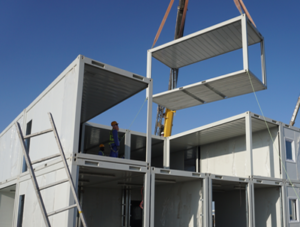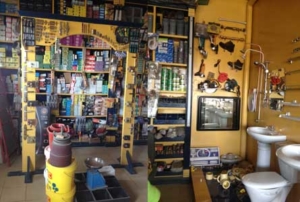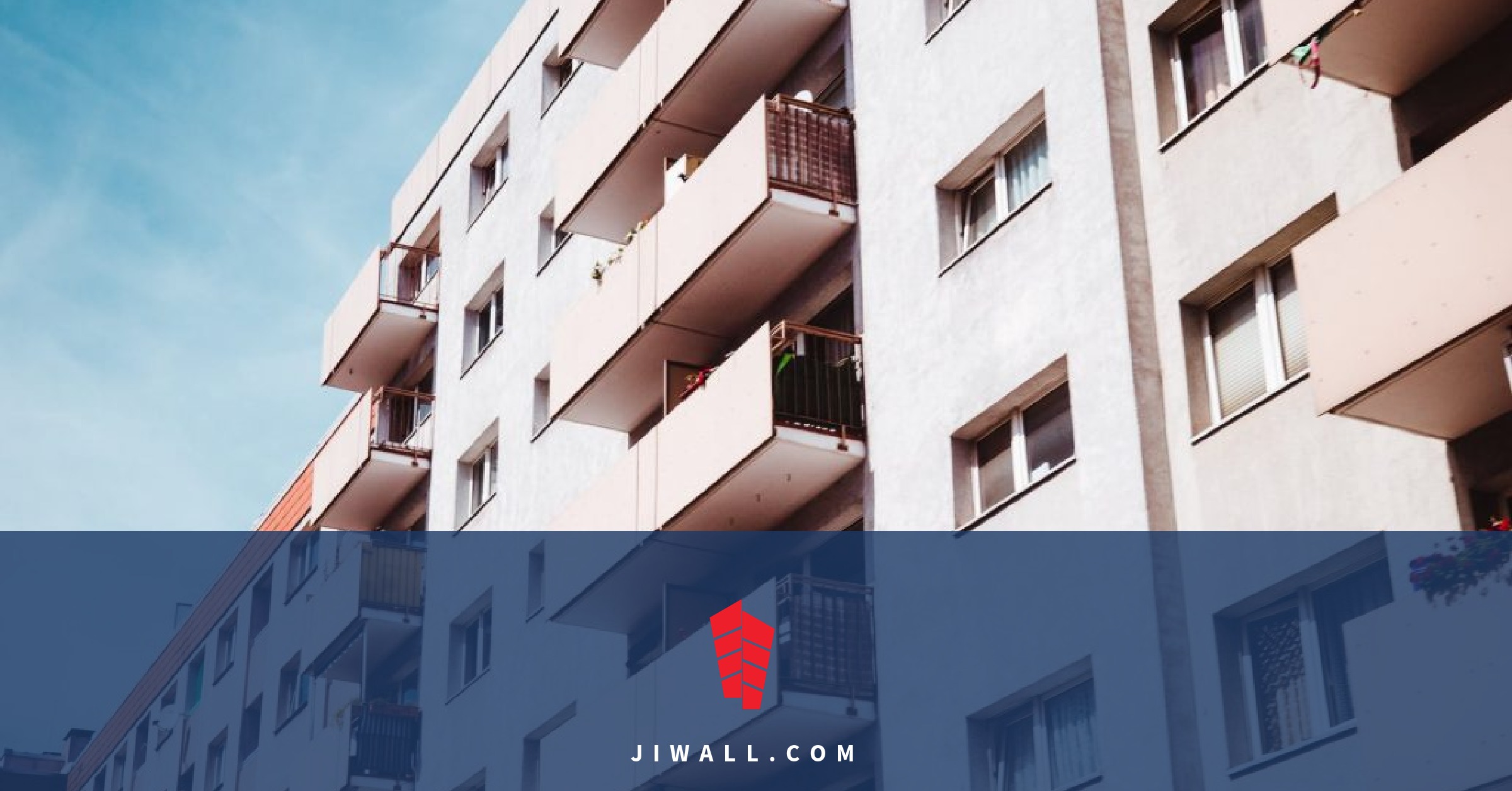The housing issue in Senegal today presents itself as a generational challenge amplified by several factors (current deficit, population growth, high cost, etc.). Access to housing thus becomes a citizen’s concern which requires participatory reflection, hence the present Jiwall initiative which aims to contribute constructively to the establishment of a plan to meet the housing challenges mentioned during the Council. presidential election of August 20, 2020. These challenges can be approached from two angles:
. the production of decent housing, expeditiously and in sufficient quantity;
. ensuring affordable housing.
In the context of the scarcity of resources caused by the economic crisis following the impacts of Covid-19, it is wise to focus on strategic choices. Indeed, the proposed solutions must optimize our scarce resources in order to implement a mechanism for the production and provision of decent and affordable housing.
In general, a state has three levers to impact housing affordability : household income, housing prices and financing conditions. We will limit our contribution to the last two levers, around which we will detail the four (04) initiatives that we believe are essential for an inclusive and sustainable housing policy.
Table des matières
Initiative 1: Relax financing conditions

According to our current understanding, the Fund for Social Housing (FHS) would aim to guarantee a “Mamadou Diallo” (taxi driver in search of housing cited as an example during the presidential council) from the banks. This solution, although beneficial, only responds to the problem of access to financing and obscures that of the cost of financing, which is just as if not more important. In this sense, we propose rather to explore solutions to solve the problems of access and the cost of financing concomitantly.
For example, it would be perfectly possible to set up a 3.5% credit system over 30 years, instead of 7.5% over 15 years. Mr. Diallo’s monthly payments, in the current state of housing costs (i.e. 18,000,000 FCFA), would drop from 175,000 FCFA to 85,000 FCFA, a reduction of around 50%, thus giving him more purchasing power. important and a smoothing of its obligations over time. We are thinking of a system that could aggregate non-productive Senegalese savings as well as funding from development partners. Similar systems are being put in place around the world and are producing very satisfactory results.
However, the implementation of such financing instruments would not be possible through traditional channels. The housing finance system in our countries is still in an embryonic state. The main stakeholders, which are the banks, are modestly equipped to offer suitable financing, due to the restrictions imposed on them.
We must bounce back from the political will expressed by the Head of State to set up a system of financing and provision of housing adapted to the purchasing power of our compatriots.
Initiative 2: Optimizing the housing production mechanism

The 100,000 housing initiative involves quintuple the annual production of housing in Senegal while ensuring its accessibility. This constraint prompts us to question the adequacy of the current production method with scaling up. The question arises as to whether we can go from 4,000 (according to MULHP) to 20,000 dwellings per year using the current method.
We propose to readjust the housing production mechanism to meet the target objective. To use an analogy, for a car to go faster after its top speed is reached, it would not only be enough to accelerate, it would probably require re-tuning the engine, lightening the body or even improving the aerodynamics. Along the same lines, here are some suggestions for optimization.
i. Public property development instead of private property development
In order to optimize the housing production system, it is important to assess the role of each actor in the value chain in order to identify and eliminate redundancies. Therefore, we propose to revisit the role of the real estate developer, which must be clearly dissociated from the builder, even if there are promoters who are at the same time builders.
In reality, the real estate developer is a seller of built or planned space. He monetizes his knowledge of demand, the availability of land, regulatory aspects as well as the means of financing available by taking the initiative of the new real estate supply. In other words, the real estate developer is an intermediary between future buyers, banks, builders, architects, etc. Its added value is clearly discernible in the real estate market.
However, in the specific case of the 100,000 housing initiative, the majority of the real estate promoter’s activities should be supported by the State (mapping and controlling demand, identifying land bases, obtaining subsidies and exemptions, etc.). In other words, bringing in a private real estate developer in this context would be redundant. In the example of Mr. Mamadou Diallo, the acquisition cost can be reduced by 15%, or 2,500,000 FCFA, by eliminating private real estate development.
We propose a system where the state establishes standardized plans of houses according to the area, and builders could apply for the realization of housing lots, according to well-established specifications. The state would partner with approved suppliers to ensure the quality and consistency of materials. This solution, in addition to being less expensive for the final purchaser, will create jobs and participate in an inclusive post-Covid economic recovery.
Moreover, this same system can be adapted to cooperatives with the aim of creating 2.0 cooperatives, which constitute an important niche for the production of housing.
ii. Take inspiration from lean manufacturing to optimize housing production
In line with our logic of optimizing the housing production system, we suggest borrowing some key concepts from “lean manufacturing”, a philosophy developed by Toyota and now replicated by thousands of organizations around the world to produce faster, cheaper and with better quality. In the aftermath of the Second World War, in the context of an impoverished and bruised Japan, this company was the first automobile industry in the world to produce more than 10,000,000 cars per year (“The Toyota Way”, 2001) . This feat was achieved with a lot of ingenuity and innovation which allowed the firm to think outside the box. We suggest doing the same.
1. Standardize social housing
The standardization of housing production begins with the aforementioned suggestion of establishing strict and appropriate plans and specifications. To take the example of Toyota, it would be inconceivable for the firm to allow each of its production managers the freedom to propose their design for the Toyota Camry. Thus, it should also be inconceivable to leave the freedom to the different developers / builders to establish their vision of social housing on the basis of a few guidelines.
Standardization is the only way to produce uniformly in quantity, combining quality and cost control. The second advantage of standardization is that it will facilitate the local production of building materials. Manufacturers will very quickly be able to develop expertise in specific products, facing proven and stable demand.
2. Simplify our construction techniques
Current construction techniques (beams and columns) are slow and complex, which makes them expensive. They require a skilled workforce, which is a limited resource in Senegal. Several “low-tech” building systems have been developed in developing countries like ours. Beyond being faster and less expensive, these systems are more ecological. These solutions are easy to implement, generally do not require an experienced workforce, and are more like assembly work than construction. Their adoption would reduce the price of housing while accelerating the country’s housing production capacity.
Initiative 3: Create a local industry to reduce costs and boost the economy

In fact, the construction industry can be the bedrock of an inclusive post-Covid economic recovery driven by the 100,000 housing initiative. It is important to note that countries such as Morocco, for which housing construction is a key factor for development, produce the majority of the construction materials they use, which Senegal does not. It is enough to analyze the inventory of products of a local hardware store to realize, in reality, hardly any competitive product going in the realization of the finishing work is produced in Senegal. For Senegal to benefit from the economic benefits of a housing policy, this policy must address the issue of industrialization, which must be based on three pillars:
i. Establishing local champions
Building an industry is no small feat. Tax incentives are not enough. On the other hand, the 100,000 housing initiative represents a unique opportunity for the State to support entrepreneurs wishing to get into this industry. Through the standardization noted above, the state can create an “indirect public order” reserved for local construction industry. The State will thus support these young companies which, during their development phase, will only have to specialize in the production of products whose demand is stable. It would thus be possible to develop local champions for the production of latches, doors, valves, sealing products, etc.
ii. Research and development (R&D)
The latest significant development in construction systems in Senegal has come with the adoption of cement as the main building material. Without government intervention through a construction technology research and development institute, such as the Food Technology Institute (ITA), the development of construction techniques would be almost impossible.
It should be understood that innovation from the private sector is only possible in a competitive environment where players are looking for a competitive advantage. The deficit nature of the residential real estate market is detrimental to innovation and encourages the status quo. It is not a question of developing “high tech” techniques but rather techniques capable of meeting the needs of reducing housing costs.
iii. Training
Finally, the establishment of a construction industry and the increase in the production capacity of housing cannot be possible without a skilled and abundant workforce. Thus, the housing initiative should be associated with a workforce training policy. This could be done through the promotion of technical fields and work-study training which guarantee the adequacy of the training and the outcome of a job.
Initiative 4: Protecting the environment for a sustainable housing policy

One of the biggest contributors to climate change is the real estate industry. According to UNEP, the real estate sector is responsible for 36% of greenhouse gases from energy consumption and 40% of global energy consumption. It is imperative to take into account, as comprehensively as possible, ecological issues in the 100,000 housing initiative. We owe it to ourselves to build cities that are sustainable, resilient and in tune with the environment. Today, several elements of our urban development put our environment at risk and must be curbed.
i. Intensifying the use of resources
The use of resources like sand poses a threat to our ecosystem. The silting up of our roads is another unfortunate consequence of the intensive use of sand in our construction methods. As for cement production, according to the UNFCCC, it represents 6% of global greenhouse gas emissions. Thus, it would be wise to take these issues into account in the housing production program. With the effects of climate change being felt every day in our countries, this is an opportunity to put in place measures that will avoid excessive expenditure in the long term.
ii. Encourage bioclimatic construction
The government, through the interministerial decree of May 28, 2020, promulgated the exemption from VAT of certain equipment intended for the production of renewable energy. Unfortunately, these tax incentives alone do not promote the use of renewable energy at the household level. Certification systems for bioclimatic buildings, such as IFC’s EDGE certification, are inexpensive and would allow the 100,000 housing initiative to have a bioclimatic dimension to match its ambitions. At the same time, this would encourage ecosystem players to promote bioclimatic construction.
iii. Urban sprawl
We understand the urgency of the 100,000 housing initiative and the need to find new unoccupied spaces to build social housing. However, urban sprawl is not a viable solution for countries without adequate infrastructure like ours. It is imperative to move towards conceptualized densification taking into account our realities to meet the challenge of urbanization. Urban sprawl in the context of our low-income economies has several drawbacks including :
1. The risk of slums
The floods of recent days show us once again that creating and maintaining a living environment is expensive. Local communities do not have the capacity to enforce urbanization plans and even less to maintain a pleasant living environment. Densification is a solution that can facilitate access to an acceptable living environment for our compatriots.
2. The increasing complexity of urban mobility
Urban mobility, which is one of the foundations of resilient and smart cities, is further complicated by urban sprawl. Mass transit will be less and less efficient and individual modes of transport will be multiplied while being accompanied, of course, by their share of inconveniences: congestion, pollution, etc.
3. Destruction of market gardening areas
At this very moment, all the cultivation spaces in the Niayes area are undergoing increasing waterproofing due to urban sprawl. This phenomenon is reflected in disastrous consequences for the local economy on the one hand and on the cost of living of Dakar residents on the other hand, due to the gradual remoteness of the food crop production areas thus causing a certain increase. prices of fruits and vegetables.
The purpose of our contribution is to encourage an understanding of the 100,000 housing initiative through a holistic prism to develop coherent and sustainable solutions. The solution we propose is like a house made up of foundations, two pillars and a roof. A robust construction industry representing the foundation supporting the two pillars of abundant housing production and ensuring accessibility, all crowned with green measures ensuring the sustainability of the initiative, such as a roof.
We sincerely hope that the 100,000 housing initiative will be an opportunity to build endogenous growth that can sustainably benefit the Senegalese economy.
About Jiwall
Jiwall is a proptech startup that aims to make housing affordable in sub-Saharan Africa. Like carpooling, we create co-construction to reduce acquisition costs.
Makhtar Diop
Jiwall Co-founder
makhtar.diop@jiwall.com







